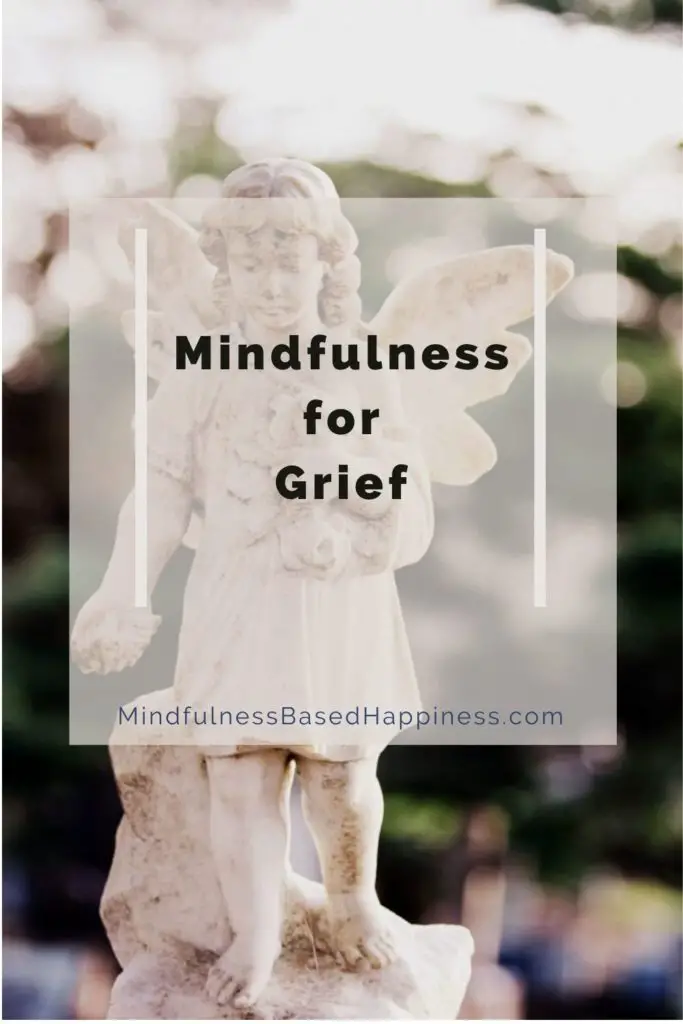Mindfulness for grief: how to cope
I am often asked how I can bear to witness this kind of pain regularly. My answer is simple: I get to see the pain of loss change people in miraculously positive ways. Over and over again I watch people transform from complete hopelessness into the positive states of mind called the Four Brahma-Viharas: loving-kindness, compassion, sympathetic joy, and equanimity. This does not happen overnight, but it does happen, and I count myself privileged to be part of that process.
Mindfulness and grief with guided meditations – Heather stang
I myself started my journey into mindfulness some time after the dead of my father. At the time, I did not make a connection between the two since I was under a lot of stress at work also. I failed to recognise that the passing away of my father was taking me down and that I had almost no more resilience.

In retrospect, the cause might have been his long illness. He was diagnosed with cancer two years before the illness took him away. My first symptoms where food allergies. It still is. Although far less pronounced. Something broke and never quite got healed.
That was almost 10 years ago. I came a long way since and I now know that I should have acknowledged my grief. I should have looked at it in a open non-judgemental way.
But most importantly, I should have accepted that I was scared to lose my father. Even now, it feels strange to write this down. Especially since I’ve always seen myself as a hyper rational person (I am, by the way 🙂 ).
So, what would I do differently now?
Or, what would be a suitable plan of action?
The most important thing that I did not know at that moment is that it is ok to not feel ok. That we need to come to terms with the fact that bad times will happen. There is little or nothing we can do about that.
After all, the bulk of what mindfulness training is all about, is to come to terms with reality. It’s about seeing our circumstances as they really are. It’s about seeing reality to its fullest. And this independent of the fact that at this moment reality is sad or joyful.
One of the core skills thought in mindfulness is acceptance. And it is this skill that will help us the most in our grief.
Acceptance in the mindfulness context means that when the unthinkable happens, we honor our self and our experience with dignity and kindness. Rather than turn our back on our own suffering, we treat ourselves as we would a beloved friend. We take the time to pay attention to the physical sensations, thoughts, and feelings that accompany our pain.
Mindfulness and grief with guided meditations – Heather stang
So acceptance is not about getting over our grief. No, it’s about fully accepting what has happened and the influence this has on our mental, emotional and physical state.
Mindfulness practices when grieving.
I will describe here the three most important mindfulness practices you can do for grief. I will only outline the practices and explain why they are so important.
I also provide links to more detailed posts about the practices.
The body scan.
Recognizing the body pattern of grief, we can learn to soften to that tension instead of feeling defeated by the idea that fear and anger are our only alternatives.
Stephen Levine
The body can tell us many things about our grieving process. Some common physical reactions of a grieving body include:
- Hollowness in the stomach
- Tightening of the throat, chest, and stomach
- Increased aches and pains
- Sleeplessness or sleepiness
- Oversensitivity to noise
- Shortness of breath
- frequent sighing
- Low on of energy
- Muscle weakness
- Dry mouth

Learning to recognise these sensation in your own body can help greatly in the acceptance process.
The usual way we tend to address these sensations is by pushing them away. If we take the time to get to know them, and realise they are common to so many people, we can feel nurtured and strengthened by this knowledge.
Furthermore, a body scan can also be profoundly relaxing. No, it is not its chief aim, especially not the mindfulness variant, but I have not performed one single guided group body scan where nobody fell asleep. So it can a be deeply relaxing experience.
Why is this important?
Dr. Herbert Benson, discovered what he coined the “Relaxation Response,” which he found to be an antidote to the fight-flight-freeze response. He found that relaxation has many physical benefits. One of them is that is counters the constricted blood vessels of stressed people. This in turn leads to a lower blood pressure. If you want to have more info about the relaxation response, you can buy the book here.
To start practicing the body scan, I invite you to head over to my detailed description of the body scan here, It includes videos on how to perform this wonderful exercise.
Loving kindness meditation
In loving-kindness, our minds are open and expansive—spacious enough to contain all the pleasures and pains of a life fully lived.
Sharon Salzberg
The second foundational mindfulness exercise for grief is metta or loving kindness meditation.
Once you start practicing sending love to yourself and others, you will start to see that it helps make our suffering more bearable. At our core, we want to be happy and we want to make others happy.

When we grieve, we tend to forget this. Metta meditation (the original name of loving kindness meditation) is the exact medicine you need to remind you that taking care of oneself and others is one of the most fulfilling endeavours of life.
Unfortunately, many of us do not feel worthy of compassion. And during periods of grief, this can be even more pronounced. We feel unworthy, and in any case left alone by the whole universe.
In those moments it is so important to support ourselves and to not beat ourselves up. We need to be compassionate towards ourselves. Reminding ourselves, once again, that is ok to not feel ok.
The most basic form of the metta meditation is to repeat to yourself:
- May I be free of suffering
- May I be happy again
- May I experience peace again
At first, the words will probably not have much power. You might even have a lot of resistance towards this practice.
That is ok too. But do not give up. Say the words slowly and look at what they do to you. Remember that you are indeed worthy of happiness, as all living beings are when you say these words.
Just repeat the word to yourself for 5 or 10 minutes a day, and look how slowly, gradually, your heart will open again to the world.
The 3 minute mindfulness break.

This exercise is really the swiss knife of mbsr. It is a practice that can be adapted to almost any purpose. Be it angry, negative or overwhelming feelings, all can be brought back into line with this little exercise.
The chief aim of the exercise is to first acknowledge whatever is happening in you and then withdrawing all your attention from it. In this way you are not pushing the difficult feelling aside but you are deliberately choosing to temporarily ignoring the feeling until you are a bit stronger.
However, you first do look at the feeling so that there is no risk of repressing it as repressing feelings makes them come back at you even stronger.
The practice:
- Close your eyes and observe your thoughts, emotions and bodily sensation. Have a look at what is overwhelming you, but do not go too deep into it. Stay at a safe distance. Do this for 1 minute
- Now withdraw all your attention and redirect it to your breathing. During the following minute concentrate only on you breath. Do not worry if you calm down or not. Just continue to watch your breath for one minute.
- In the last minute, re-open to the world around you. Open your eyes and look at your surroundings as if you have never seen then. You can also start to notice your body and emotions again. You might notice that the overwhelming character of what you experienced has lessened.
My experience with this little exercise is that it can work wonders. I even teach it to people that received no formal mindfulness training. And it is by far the most popular mindfulness exercise with my students.
This post was heavily inspired by the book ‘Mindfulness and grief with guided meditations‘ by Heather stang. It is an eight week type of program to deal with grief. I highly recommend this book. You can buy it here. More information on Heather Stang can be found on her website.
If you have experience with mindfulness and grief. Let me know in the comments. Also let me know if you applied these techniques and what were the results.


Hi, I’m Olivier Devroede and I have been meditating seriously since 2009.
Due to the great benefits I have seen in meditating, I decided to become an MBSR trainer myself and start a blog.


